Enjoying a glass of good wine is one of life’s simple pleasures. Have you ever wondered how to get the most out of your wine drinking experience? Decanting wine can take your appreciation and enjoyment to the next level.
Decanting is the process of pouring a bottle of wine into a special vessel designed for that purpose. It helps aerate the wine and remove sediment, resulting in improved flavor and aroma.
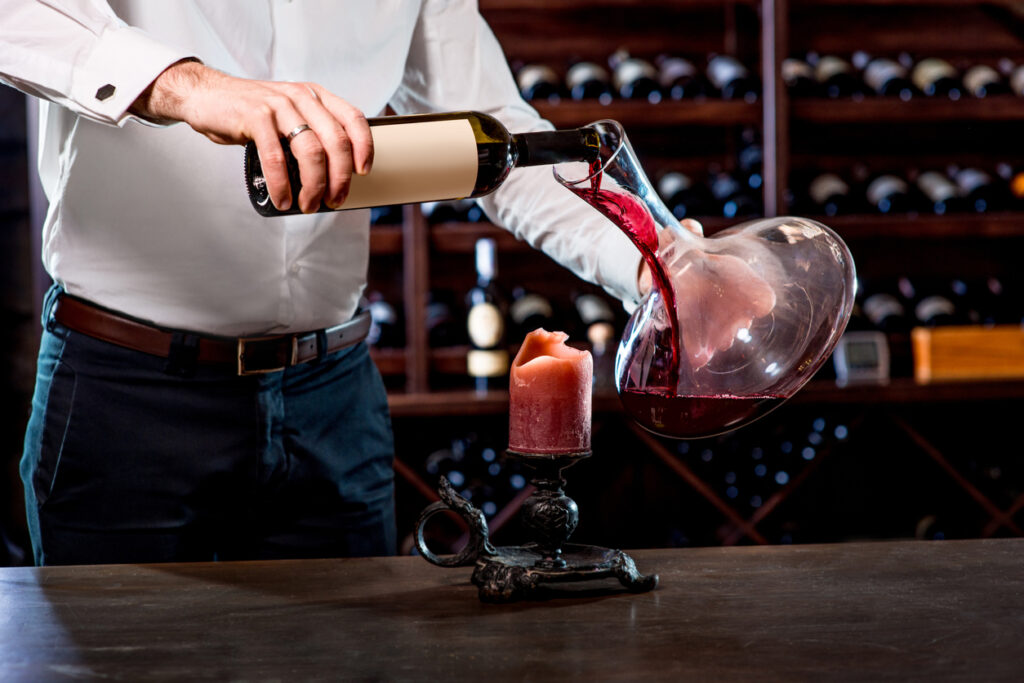
What is decanting wines
Decanting wines is to pour a bottle of wine slowly into a wine decanter. You can use a stainless steel sieve on top of the wine decanter to catch sediment or remove broken cork. The process of decanting wine increases the contact surface of the wine with oxygen and therefore liberates aromatic compounds.
Why to decant wine?
A large part of “taste” is “smell”. Decanting wine opens up the wine’s flavor. The main purpose of decanting wine is to bring it into contact with air and to liberate its flavor. Slowly pouring your wine into a glass vessel liberates gases which are in the wine but also oxidizes the wine.
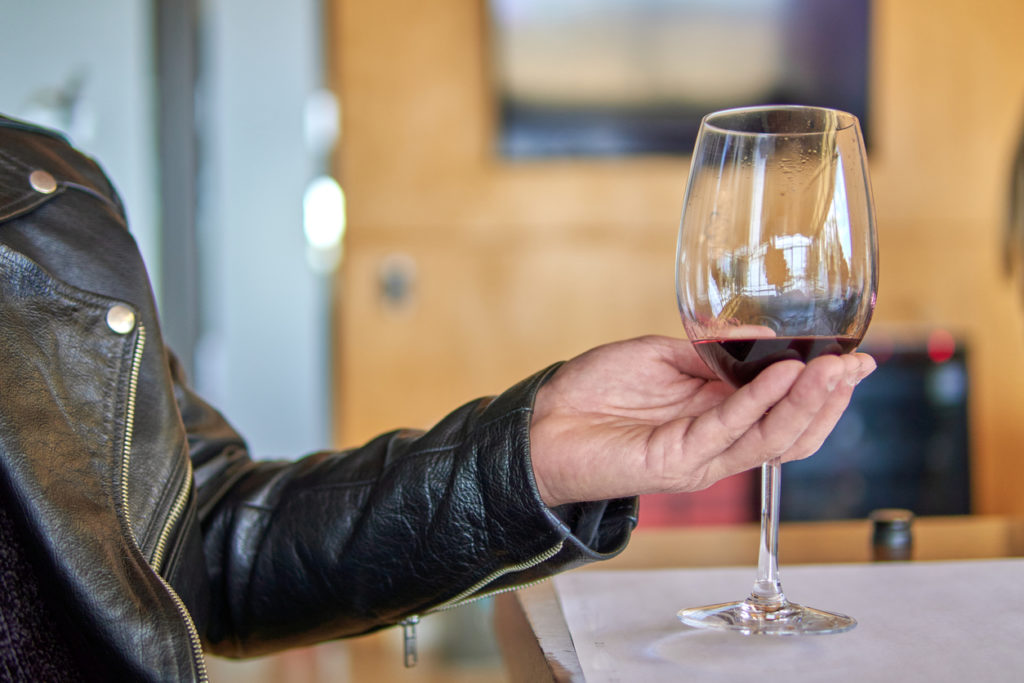
You rapidly develop the volatile aromas of your reds. The oxidation which happens on the surface area by oxygen exposure softens the tannins. Wine pros and sommeliers call this process “letting a wine open up”.
Benefits of decanting wine
Decanting wine brings many benefits to the overall experience. Not only does it make the tasting seem really fancy, but there are also practical and functional benefits that ensure the wine tastes better.
Removal of sediment
The first benefit is that decanting is a process where any sediments that lay at the bottom of the wine are separated from the wine.
White wines tend to have less sediments as they are consumed when they are young. Sediments are largely found in red wines which are stored for a longer time. The sediments won’t harm you but they can add a bitter taste to the wine.
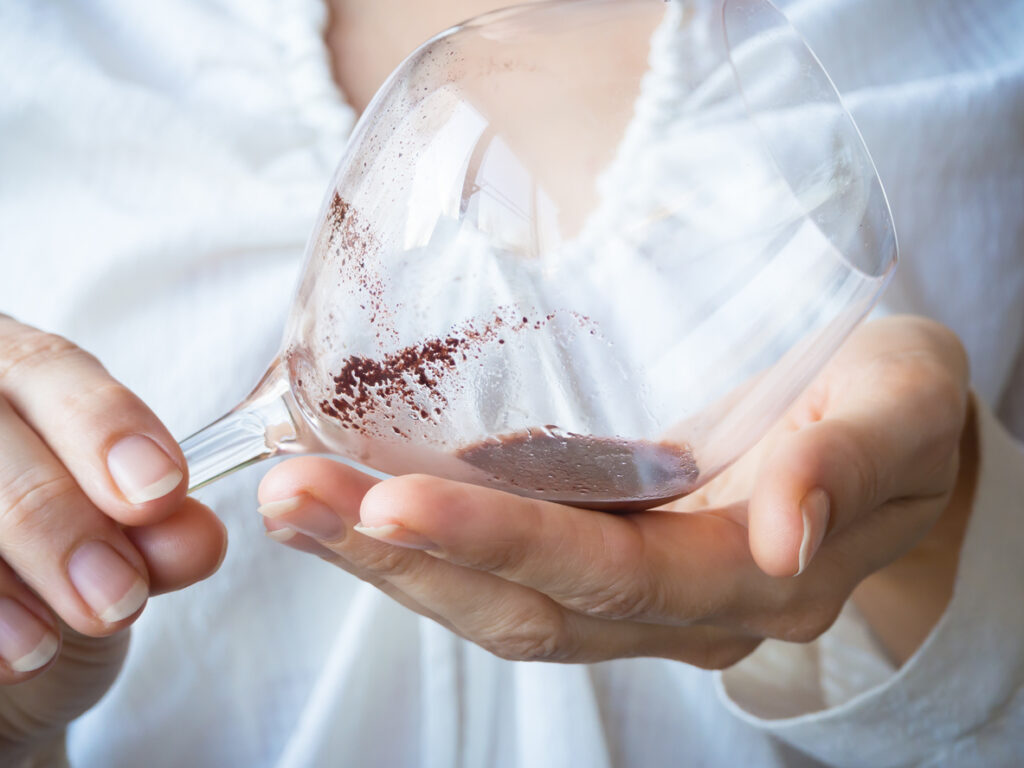
Getting the wine started
The second benefit is that the flavor of the wine will be enhanced thanks to the aeration process which takes place as the wine is transferred from bottle to decanter.
Aeration means that oxygen is being introduced to the liquid which softens the tannins as well as releasing any gases that may have developed. It allows the flavors of the wine to breathe and expand.
Removal of broken cork
The final benefit is that the decanting process can help during instances of broken corks. Corks may break and pieces may fall into the bottle so it’s best to decant immediately as the decanting process should catch those pieces in the same way it does the sediments.
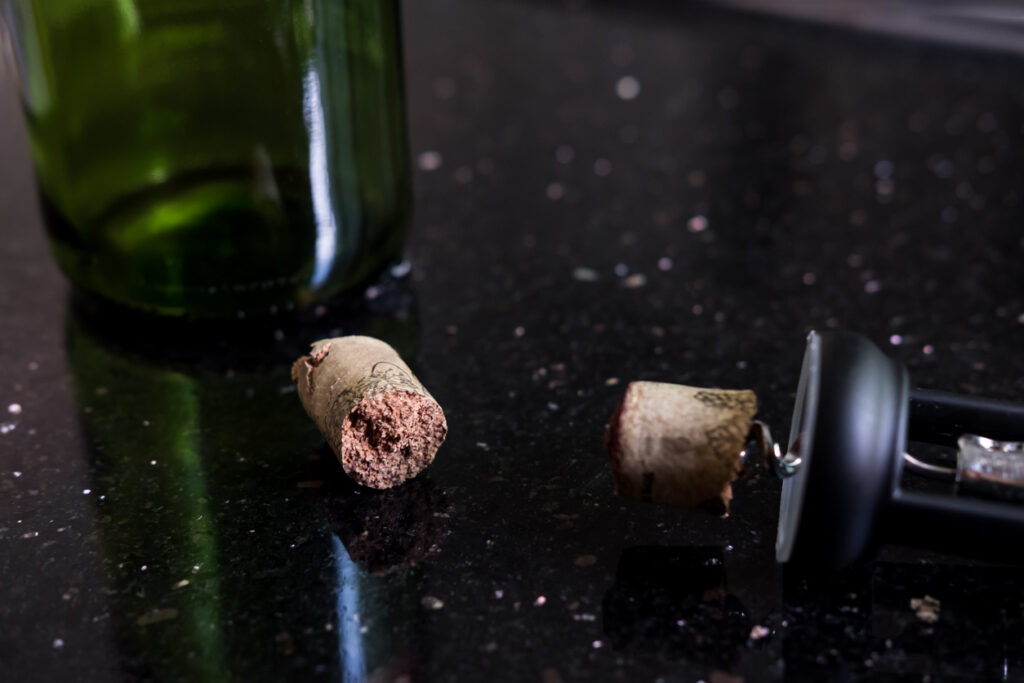
If there are tiny pieces of cork that have disintegrated then use a strainer which will help filter them out.
Wines that need decanting
The majority of wines can be decanted and in almost all cases, this will improve the flavor and you’ll experience the benefits even if it has been decanted for a short while as this will expose the wine to aeration.
Younger red wines will always need decanting due to the level of bitter substances which are more intense and need the aeration.

There are some wines which always benefit from decanting which include: Bordeaux, Burgundy (Pinot Noir), Cabernet Sauvignon, Malbec, Shiraz, Barolo and vintage ports.
Wines that don’t need decanting
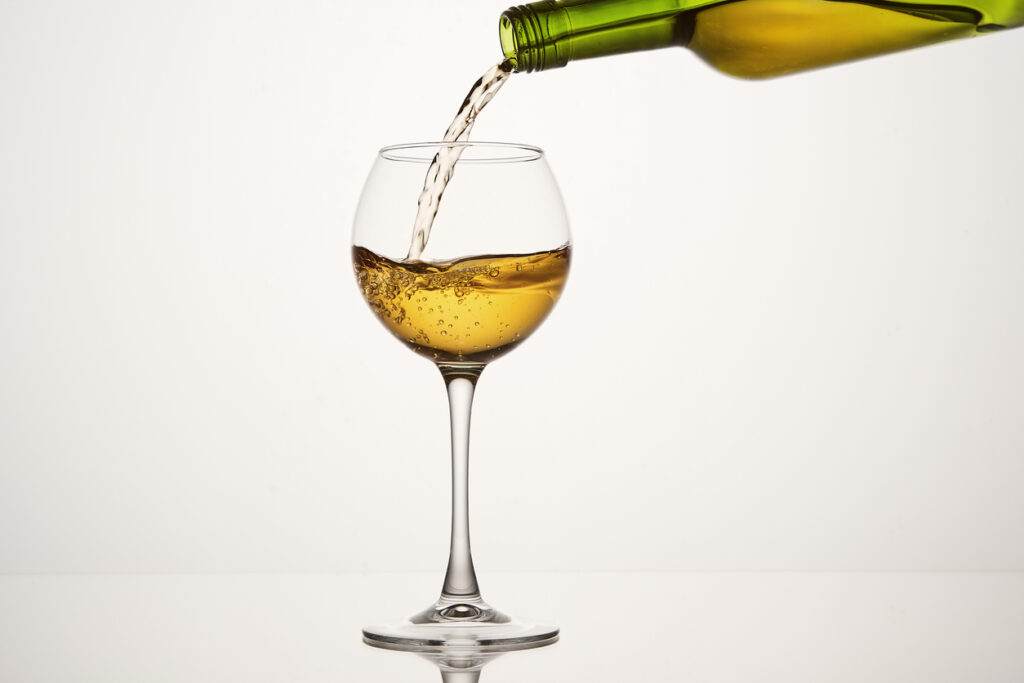
Decanting wine is a process that releases oxygen into the liquid, allowing it to “open up” and bring out its best flavors and gasses. While decanting older wines can be beneficial, there are certain wines that should not be decanted. Generally speaking, younger wines and especially those made with white or rose grapes, as well as sparkling wines don`t benefit from decanting.
Sparkling wine
The only type of wine that should never be decanted are sparkling wines which include Champagne. This is due to the fact that decanting and aeration reduces the flavor and bounce that they have as they will go flat.
In very rare cases sparkling wine like vintage Champagne is decanted to develop the flavors and aroma. Before doing so please consult a certified sommelier.
Most sparkling wines are young wines which are based on white wine. Their aroma and flavor quickly develops when poured into a flute.
White Wine and Rosé Wine
Other types of wine which normally don`t need decanting are rosé wines or white wines. Their flavor develops rapidly in the glass and they normally don`t contain any sediment.
Sometimes you have a sulfury smell and taste in young wines. To reduce this you can decant wines for a very short time or let the wine rest in your glass until the aroma disappears before you drink it.
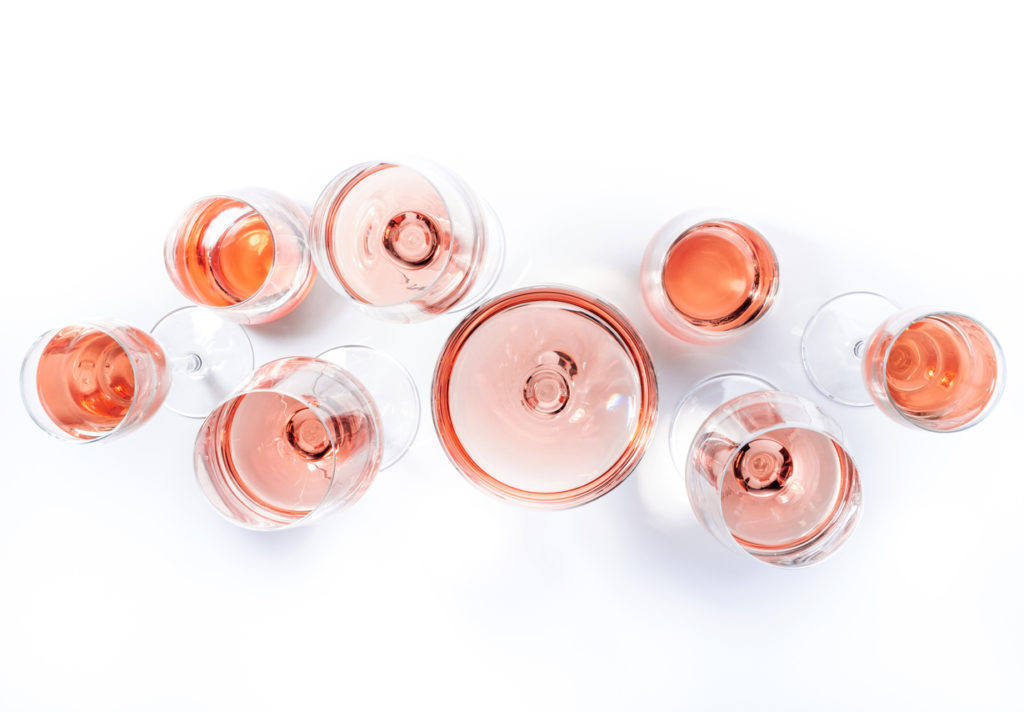
How to decant wine
So now you know which wines need to be decanted and which ones not to decant, here are instructions on how to actually decant your wine.
Bear in mind that it takes practice to perfect as most techniques do but you’ll get the hang of it soon enough.
- Remove your wine from storage and sit it upright for a day if it has been stored horizontally. This will cause any sediment to gather at the bottom of the bottle.
- Using a corkscrew, open the bottle of wine.
- Slightly tilt the neck against the decanter and keep the bottom below 45 degrees to avoid any wine from overspilling quickly which will disturb the sediment.
- Pour the wine slowly into the decanter while also keeping an eye on any sediment that may approach the opening of the bottle.
- If any sediment is creeping towards the opening then tilt the bottle back slowly to an upright position before starting again.
- Leaving around half an ounce of wine with the sediment, finish pouring the wine into the decanter.
- Once done, leave for around four hours before drinking the wine and try to consume it within 18 hours.
How long to decant wine ?
When it comes to the art of decanting wine, the process can be a difficult one for those who are inexperienced. Decanting is typically done with red wines that are either young or old. It’s important to understand how long to decant each type of wine in order to get the best flavor and experience from your bottle.
When decanting wine always check on the flavor of the wine in the decanter to avoid over decanting!
How long to decant young wine
A certified sommelier will be able to advise you on the time you need to decant wine before serving wine. It is very important to avoid over decanting wine. Too much oxidation will make your wine taste bland.
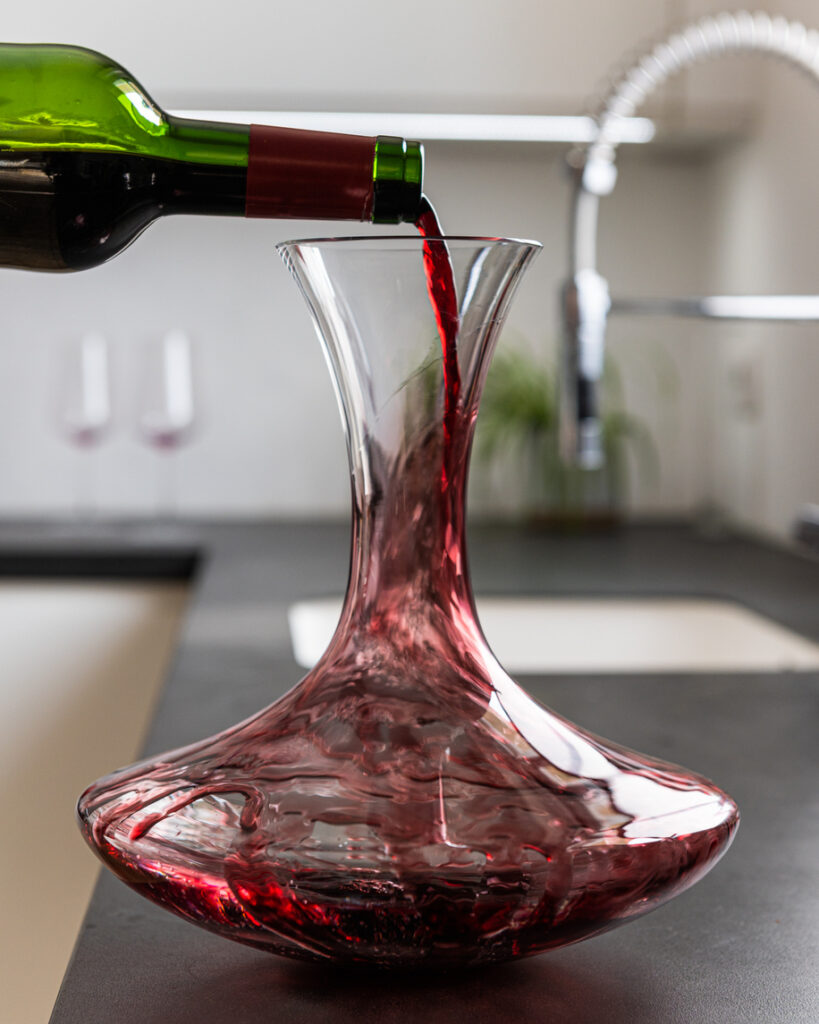
For younger, robust red wines, like a Cabernet Sauvignon or Merlot, it’s important not to over-decant them since their tannins are still strong and will soften with time in the glass. These types of red wines should only be decanted for 20 minutes at most; this allows subtle aromas and flavors to develop while keeping its structure intact.
How long to decant older wines
Decanting old red wine is a necessary step for any serious connoisseur to ensure the fullest flavor and enjoyment of the bottle. It’s important to understand that different wines require different decanting times, so it’s important to know how long each should be decanted before enjoying.
When it comes to old red wine, it’s best to err on the side of caution. Generally speaking, allowing an older red wine between one and two hours of decanting time will help separate sediment that has settled in the bottom of the bottle as well as open up its full flavor profile. However, depending on age and type of red wine, some may require an even longer time for optimal enjoyment.
Older Barolo wines are known for being especially tannic and can greatly benefit from an extra hour or more in order to become smooth enough to drink.
Double decanting
To double decant is a technique used by wine connoisseurs to aerate and enhance the flavor of their favorite wines. The process involves transferring the contents of one container into another, allowing air to combine with the liquid in order to bring out its aromatic and flavorful qualities. Knowing when to do decant twice can be tricky, but it can dramatically improve the taste of your favorite bottles.
The most important factor in deciding when to double decant is knowing what type of wine you’re dealing with. Wines that are aged longer tend to benefit more from this process than those that are younger. Don`t use it on old wine!
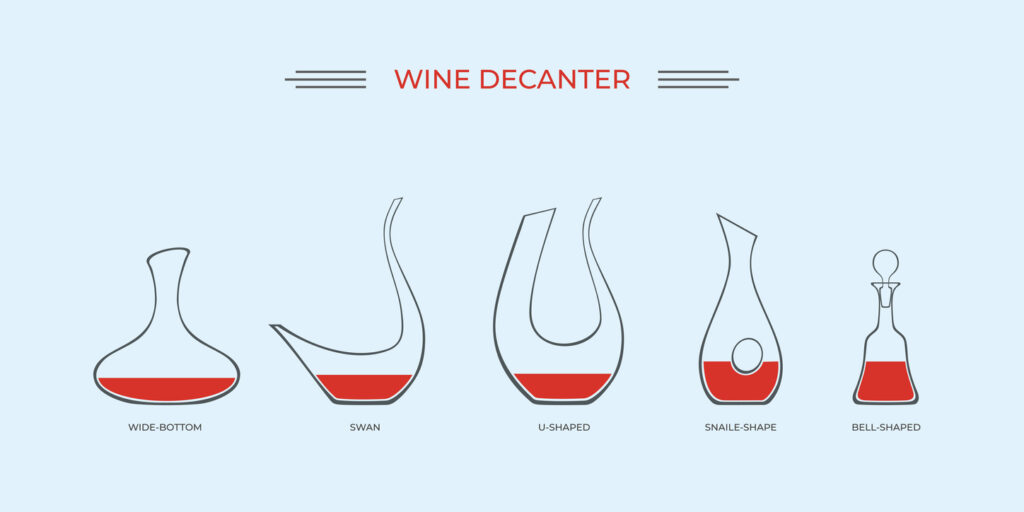
We only recommend it for young rich full bodied red wines with high levels of tannins like young Barolo, Barbarescos or Cabernet Sauvignon from the Napa Valley.
If you’re not sure whether your bottle needs extra aeration or not, try opening it up and taking a whiff before deciding if it’s time for double decanting.
Decanter vs Carafe
Decanters and carafes are both used as vessels for storing wine, however, they do have different purposes. Decanters are shaped to aerate your wine whereas carafes are used only to serve wine so they do not improve or affect the flavor in the same way that decanters do.
Serving decanted wine
Once the wine has been fully decanted, you want to make sure that you are serving it in the proper way. The traditional way to serve decanted wine is to display the original bottle and cork to your guests so they will know what wine they are drinking.
If there is any wine left, you can pour the wine into the bottle and seal it with the cork to drink at a later date.
Conclusion
Decanting your bottle of wine is important especially if it is an older wine or a wine which has difficulties to develop aromas. Enjoy to pour the wine in a glass decanter next time you open a bottle of red. White wines mostly don`t need to be decanted. Enjoy!

